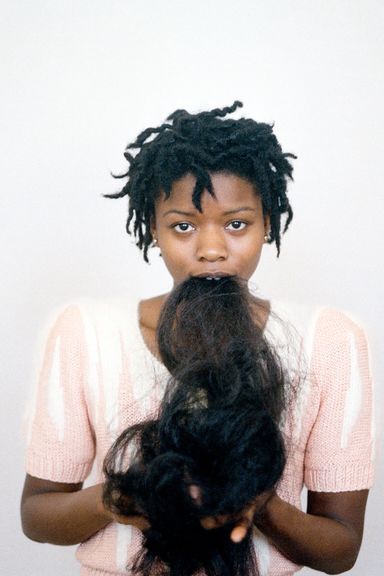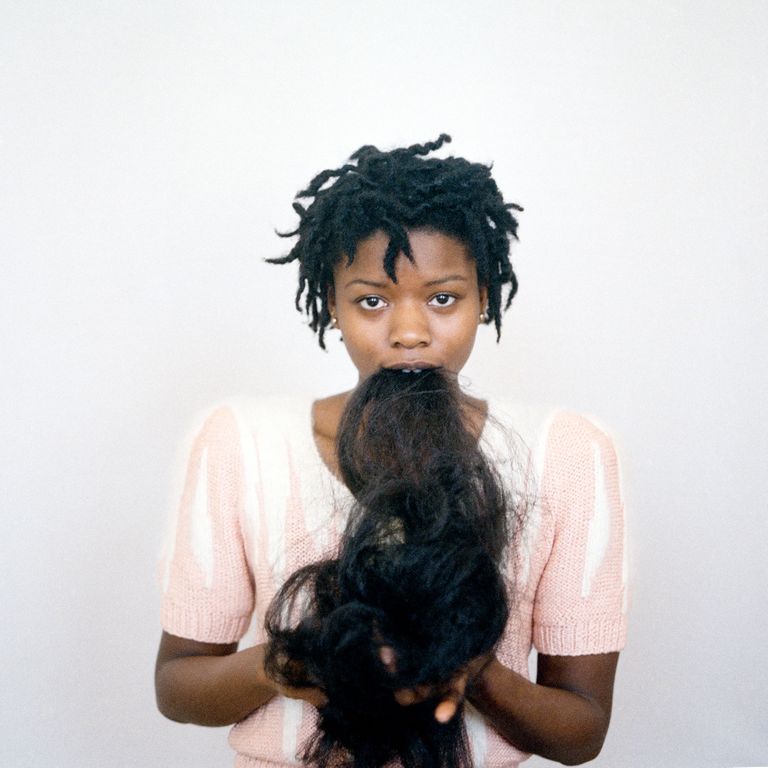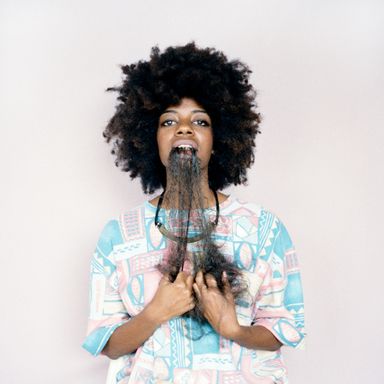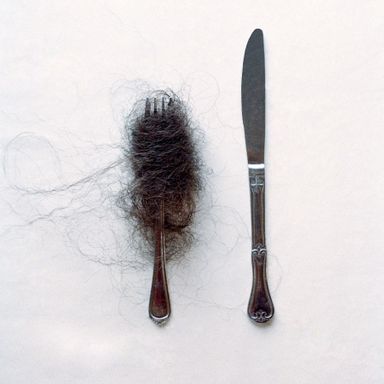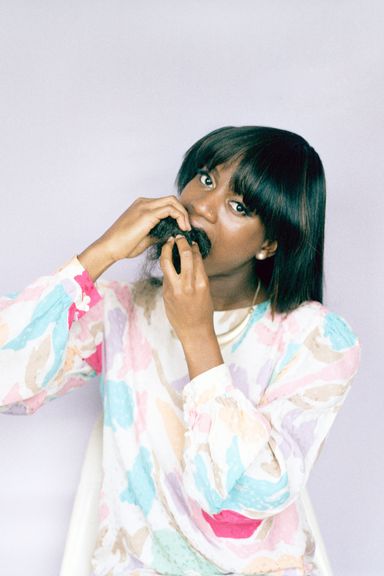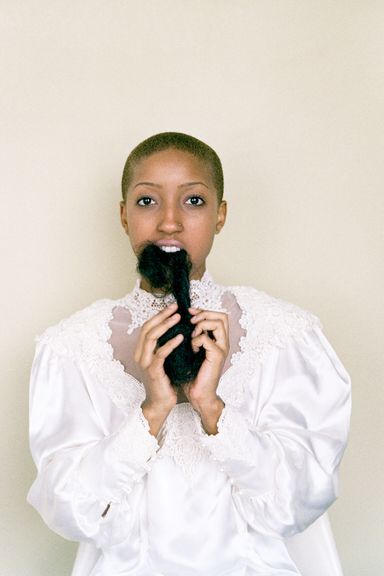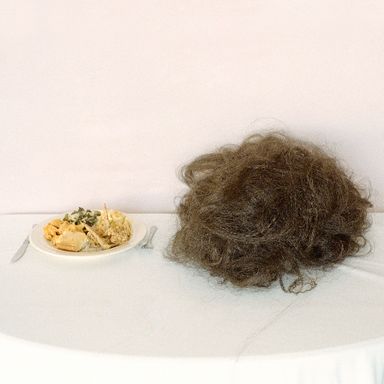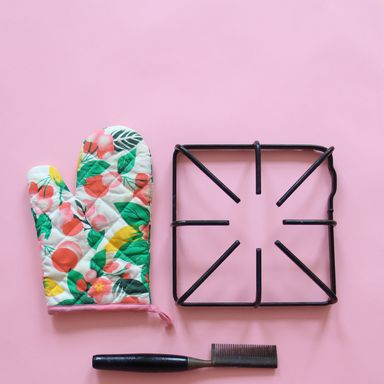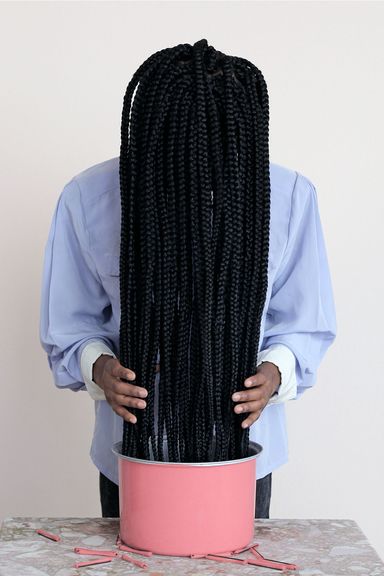Photographer Nakeya Brown Explores Black Hair
Nakeya Brown is finally recovering. Her first solo art show In Private Moments at Five Myles closed last week, and she admits to having had tunnel vision for the past two weeks. It’s been a big year for Brown already, having been featured in two other shows — Ladies Night in Grand Rapids, Michigan, and Redefining Black in Washington, D.C. In June, her photos will appear in Canadian photographer Petra Collins’s book, Babe, and she just started her first year at George Washington University’s M.F.A. program in photography.
The 27-year-old explores the complexities and politics of black hair. “I’m interested in the ways in which we look at and define beauty from the context of a black woman,” she told the Cut. So far, Brown has three projects that are about this topic: The Refutation of “Good” Hair; Hair Stories Untold; and if nostalgia were colored brown.
The Cut spoke with Brown about her relationship with her own hair, the inspiration behind her work, and dealing with cultural appropriation.
What is your most important hair memory?
One of the most memorable moments in my life was when I did the “big chop” and the self-reflection that grew out of me cutting my hair off. Going natural was a highlight of my life that I’ll tell Mia [her 2-year-old daughter] about when she’s old enough and we’re talking about hair.
What’s your relationship with your hair now that you cut your hair off?
Once you cut your hair off you notice the way you look at yourself differently, but then also how other people look at you differently, too. That really made me want to explore the significance of what hair meant socially. We grow up knowing that there are all of these social connotations surrounded around hair, but I never really made work about it. I started thinking about that more after cutting my hair and noticing the change in which people treated me and how that occurred. There were moments where I would be in the street, after I cut my hair off, [when] I’d walk past another natural-hair girl and there would be this random short connection that we’d have with one another. We’d look and nod or we’d actually go up and connect and talk to each other. And then the way in which you would be talked to in the street, like when my hair was natural and short and growing out men would be like, Hey, queen, or Sis. Hair is such a visual thing and people read it in different ways.
The term good hair in the black community stems from a place of looking at yourself through someone else’s gaze. In your project The Refutation of Good Hair, you are negating that term. Where did the idea for this project come from?
Growing up my hair was permed, but it wasn’t long and free-flowing, it wasn’t very lush, it wasn’t what you would traditionally categorize as beautiful Eurocentric hair or “good” hair. That’s something that I struggled with. I think a lot of black girls, of all different ages, grow up struggling with it and it also continues on into your adult life. There are really two things that lead to The Refutation of Good Hair, it was me cutting off my hair and embracing the natural beauty within myself, not being afraid to see what’s underneath all of this perm and processing and the constant [aspect of] society projecting their ideas onto me and the oppression of that, accepting myself as myself. And then also giving birth. Having a little girl of my own and then knowing that her hair texture is going to be like my hair texture, so therefore she is going to have the same experience that I had growing up where you are struggling with esteem, you’re struggling with accepting yourself, you’re struggling with feeling like the way you are naturally is beautiful. Even now, Mia, she shakes her hair and she’s like, “Mommy, it’s not moving,” and she gets annoyed when her hair doesn’t move. It’s just little things like that. When she looks at my hair, and she’s like, “No, Mommy, I like your hair,” and my mother’s hair, my mother is natural. We’re constantly in the house reinforcing how beautiful our hair is naturally. I was definitely trying to challenge stereotypes and these racial ideas about beauty that exclude black women and put us in the margins.
Another thing that happened, just completely off chance, with the The Refutation of Good Hair, I just assumed all of the girls would show up natural, but they didn’t. It forced me to go back and look at the original mission of the project, which is really trying to challenge that black women have to constantly conform themselves to fit into someone else’s idea of beauty. But then when the girls showed up, one of them actually had a weave in and I knew she was natural underneath. Then I thought about the multiplicity of black hair and while I do want to fight for the equality and thinking about beauty in a term that’s more inclusive, at the same time I had to address the fact that someone in my project was wearing a weave. I started to think about all the ways in which my hair has existed and I’m sure a lot of other black women and their hair have existed. It shows the way in which black hair can be a way of expressing yourself and there are so many different ways to express yourself through hair. Our hair can’t be contained or boxed into one thing, it really runs a gamut.
Last week, the Hunger Games actress Amandla Stenberg uploaded a video where she breaks down the appropriation of black culture. One of the things she mentions is how hair is an essential part of black culture and a black woman’s identity. What do you think hair means to black women?
Someone used to say to me, Your hair is your face, it’s the first thing people see when they look at you. Black hair has been such a political debate in terms of constructing black identity for men and for women. In the early 20th century when we were trying to assimilate into American culture — hair and skin, these are two very important markers and signifiers of power, of beauty, of class, of identity. I think that history of black women, our identity being formulated out of such visual characteristics, it’s really hard to get away from that and it’s embedded and ingrained within society even to this day. When I graduated, I had insecurities about entering into the workforce with natural hair because there’s hair policing and acceptability politics in terms of in what context do you wear this style and why and when. Hair for black women is still going to be the first point of communication in terms of looking at one’s self and others looking at you. It’s complicated, man. It’s such a marker of so many different things that it’s difficult to separate hair from myself and my identity as a black woman.
There’s a very thin line between flattery and appropriation. When you see things like cornrows and slicked-down baby hair on white women using it as a fashion trend, what’s your reaction?
My immediate reaction for seeing white women appropriating black hairstyles is that again, black women are the center of everything. Our style and our culture, it’s changed throughout the years, every decade it’s something different, but the influence that black aesthetic and black style has on other cultures outside of ours is a really powerful force. It’s frustrating when you can see a white woman wearing braids and all of a sudden, you have Jay Z talking about Bo Derek wearing her hair in a twist and she’s sort of put up on a pedestal. It’s like well, black girls were wearing their hair in braids since way before her, where do you think she got that from. Black women and our stories and contributions tend to be silenced, and seeing that really inspires me to continue making work of this nature where I’m really bringing all of the memories and the style and the aesthetics and the rituals and the processes and the culture that black women have cultivated in our homes, in our communities, to really create a shared sisterhood. My work is really about archiving that and preserving that — looking at our history and talking about it and learning from it and growing from it. It makes me think about authenticity and authorship, and it’s important that we are writing our own stories.
When I first saw your photo of the pressing comb and stove top from Hair Stories Untold, I immediately thought of Carrie Mae Weems’s photo of the woman brushing hair at the dinner table. It invokes the same feeling of shared experiences, but with a more minimal, how-to approach. What was your thought process behind taking out the person and focusing on the routine?
I was working on Hair Stories Untold and if nostalgia were colored brown at the same time, and I think what was happening for me was I was really interested in the ways in which cultural objects also can incite memories and you can connect to an object in the way that is as powerful as there being a body there. That’s really where that came from. It started from me just working with objects and trying to find objects that are a part of my history and my memories. It’s a bit of self-referencing through objects as opposed to having a body there. I definitely think that memories don’t just live in the people that make them, they live in the smell, they live in the sight, they live in the tools, they live in all of these things. I really wanted to open up the work to include a more unconventional way of framing an experience and presenting it in terms of a photograph.
This interview has been edited and condensed.
